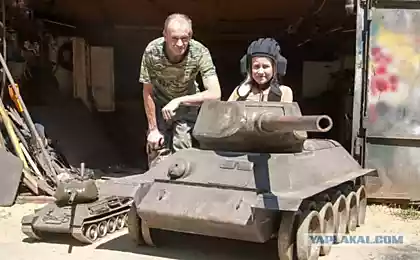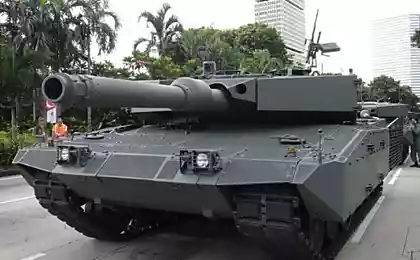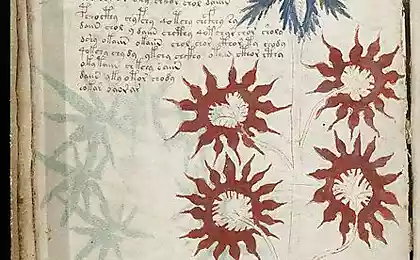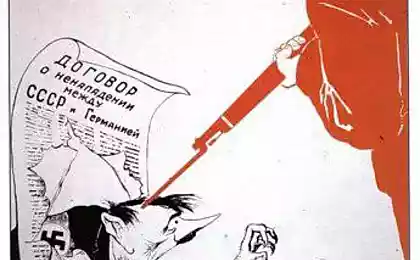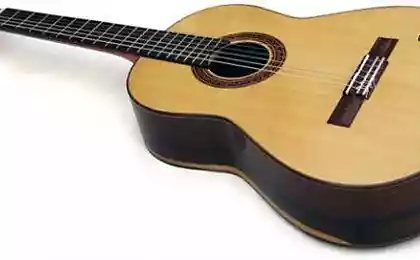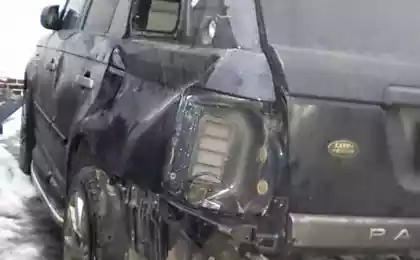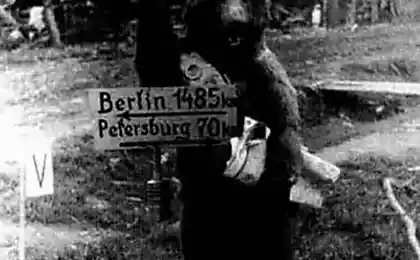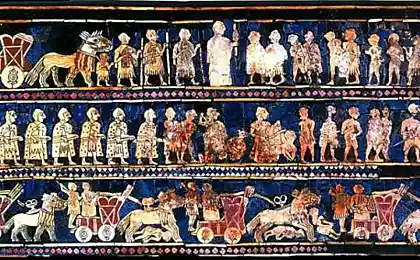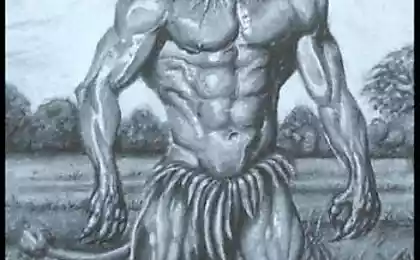956
Top armored cars of the twentieth century. (10 pics + text)
For help in creating an article I want to thank hmsuliss
Military Channel was one rating - the best armored vehicles of the twentieth century. Top of the best armored vehicles left the world more strange impression than tank rating.
The best armored car of all time named the American M113. It's not that the track [next] armored vehicle is bad. Basically the car has left its mark in the history of the world wars. The problem is different: M113 - this is not a machine on which to attack the enemy. Anyway, that is not the enemy, which is able to shoot. On M113 conveniently delivered infantrymen on the battlefield. Then the soldiers dismount and go on the attack, and a machine gunner APCs (for security reasons the machine is left behind) covers them with fire. That is the kind of war it lightly armored cab.
Attack enemy positions can be quite on the other machines: BMP. What is quite amusing: they too are in the ranking. In second place - the American "Bradley" in the sixth - our BMP-1. And here is a list of the machine closes entirely different class of "Humvee" - a military version of the well-known SUV, which we used to call the "Hammer".
And in the rating got wedgies different times and peoples, and other wheeled and tracked vehicles. To complete the picture there is not enough just war chariot of the Roman legionaries and some modern motorcycle.
I want to thank all those who took an active part in the discussion, additions and reading these topics. At the moment - this is the last article on this subject. Soon, maybe I'll come back to this topic, because we have not yet discussed the submarine and istrebitili. But for the moment - is the completion of a series of contributions from the Military Channel! Thank you!
10. "Humvee" (USA)
In 1979, the Pentagon announced a competition to design a light tactical vehicle for the army. Promising development called HMMWV, which stands for High Mobility Multi-Purpose Wheeled Vehicle - «highly mobile multipurpose wheeled vehicle." It is clear that the name of the language can be broken, and not once, so engineers quickly came up with a name easier - «Humvee» («Humvee"). Exactly one year later, in July 1980, the first prototype went on sea trials in the Nevada desert, where are the most secret bases where the US Army and tested the latest military equipment. For example, at the same time there is an SUV "became the wing" fighter F-117A and B-2 bombers, which were created under the "Stealth". The aim of the first stage of testing of all the machines was to select the best specimens, and after twelve months a special technical commission of the US government announced the sentence: contracts for the production of pilot batches of the cars get AM General, General Dynamics and Teledyne. The family of "Humvee" includes fifteen versions with common chassis, engine and transmission - from the staff car to ambulance and mobile rocket launcher. It is important that all this diversity is based on interchangeable and easily mounted modules, of which there are forty-four - the big designer of "Lego" for the military. For example, a two-door truck with the aid of a simple set of tools elementary turns into a mobile command post and vice versa. This is not only practical, but also economically.

9. LVT Mk-4 (US)
Floating car LVT in large numbers were issued during 1942-1944. The name of the family is formed by reducing the English words Landing Vehicle, tracked (amphibious vehicle, tracked). Reservations had only transporters models LVT (A) (2) and later releases machinery LVT (4).
The first of these engine placed in the rear of the housing, and the troop compartment - in the middle. Armor plate thickness of 13 mm at the front and were only on department management.
The machine LVT (4) the engine was moved to the front of the body, and the troop compartment is shifted to the stern. Tailgate was soft, which facilitates loading guns and other bulky items. In the latest series of cars above-water part of which is armored.
All machines have a family welded to the sides of the hull hollow pontoons, which were placed inside the caterpillar bypass. Each pontoon has been divided by partitions into five sections. Therefore, during the formation of the water holes filled only one section and the machine kept buoyant. On the tracks were attached special blades through which the velocity of the water increases. Weapons Mk 4 armored LVT (4) - four gun caliber 7, 62 mm.
8. M-3 (US)
On the basis of BMP created reconnaissance vehicle M3 (scheduled to deliver 3,300 units), which looks no different from M2 "Bradley" and has similar characteristics. However, it changed the layout of the troop compartment, there are no loopholes, increased ammunition weapons, including rockets «Toy» (ten pieces). BRM is equipped with two radios, radar reconnaissance of ground moving target AN / PRS-15, as well as radiation and chemical reconnaissance.
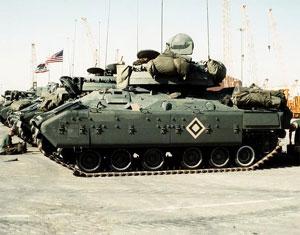
7. «Bren Carrier» (United Kingdom)
"Universal Carrier" (eng. Universal Carrier - «universal transporter"), commonly known as "Bren Carrier" (eng. Bren Carrier - «carrier" Bren ") - British lightweight multipurpose armored personnel carrier of the 1930s and during World War II . Built by Vickers-Armstrong in the years 1934-1936 and was intended to be the carrier of various weapons, especially guns, one of which gave the car its widespread name. Serial production of Universal Carrier lasted from 1936 to 1945, in addition to the UK, they were produced in Canada under the designation T16. In all there were about 90 000 armored vehicles of this type, making it one of the most popular models in the history of armored vehicles. Universal Carrier armored personnel carrier was the main British and Commonwealth during World War II and was used in a variety of roles - infantry armored personnel carrier, the carrier arms, Ammunition Carrier, towing artillery, reconnaissance and other cars. A significant number of machines was also in the war supplied European allies Britain, especially the Soviet Union. After the war, Universal Carrier remained in service with the UK until the 1950s and was used in the Korean War, and also comes in a number of other countries, some of which he was removed from service only in the 1960s.
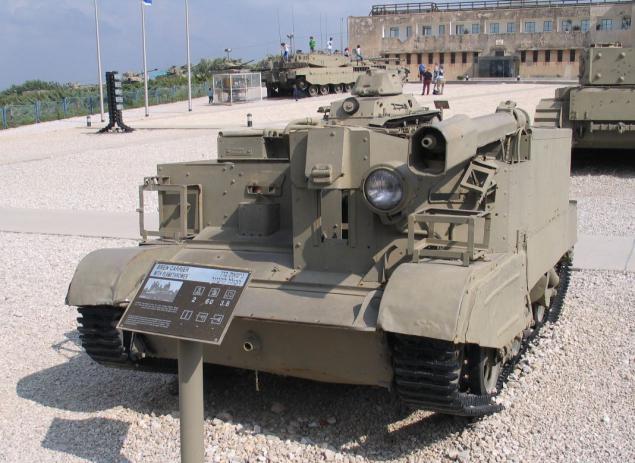
6. BMP-1 (USSR)
BMP-1 (Infantry Fighting Machines-1) - the first Soviet armored combat tracked vehicle designed for the transportation of personnel to the cutting edge, increasing its mobility, armed and security of the battlefield and joint action with the tanks in battle. Fighting vehicle taken by the Soviet Army in 1966. Serially produced from 1966 to 1979. The armament of the BMP-1 includes 73-mm smoothbore gun 2A28 Grom, coaxial machine gun 7, 62-mm PKT and anti-tank guided missile system 9M14M "Baby", also has a built-in anti-missile system 9K32 "Strela-2».
Protection of the combat vehicle is a case of rolled welded armored sheets. At the top of the front part of a large integrated hatch closing flip-ribbed aluminum alloy armor plates. Tower conical shape. To protect against penetrating radiation a nuclear explosion knocked used anti-radiation.
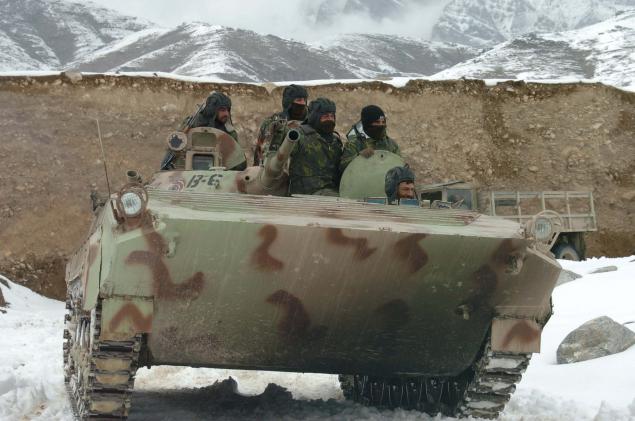
5. Sd.Kfz. 251 (Germany)
SdKfz 251, Sonderkraftfahrzeug 251 - German half-track armored personnel carrier medium of the Second World War. Created in 1938 on the basis of artillery tractor Sd Kfz 11 and produced commercially from June 1939 to March 1945. During the Second World War, SdKfz 251, along with a light SdKfz 250 armored personnel carrier was the main German and served as the basis for a whole family of cars for different purposes. According to the number of issued copies to World War II armored personnel carriers, he was second only to the American M3. During the Second World SdKfz 251 was delivered in small quantities allies Germany and after the war he modernized version was made in Czechoslovakia before the 80s.
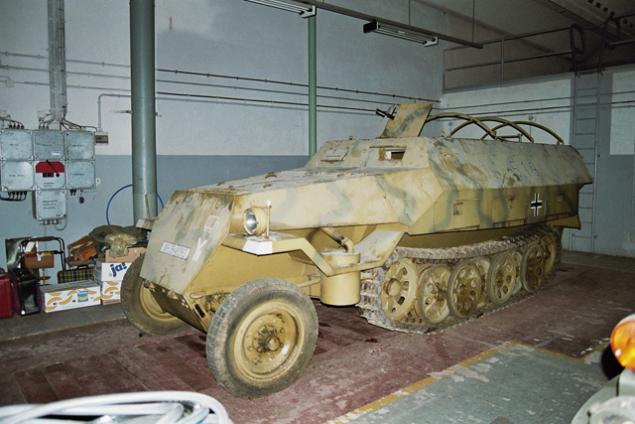
4. "Stryker" (USA)
"Stryker» (Stryker) - a family of wheeled armored vehicles designed and manufactured by the American company "General Dynamics Land Systems» (General Dynamics Land Systems).
It is in service with the US Armed Forces.
Named in honor of two American soldiers was posthumously awarded the Medal of Honor: Stuart S. Stryker, who died in the Second World War, and Robert F. Stryker, who died in the Vietnam War.
Machinery "Stryker" intended to equip the mechanized brigades "Stryker", created in the early 2000s, according to the concept of fighting brigade groups and intended for use in low-intensity conflicts. These teams are intermediate between "heavy" mechanized brigades, armed with tanks M1 «Abrams» and BMP M2 «Bradley" and light infantry brigade.
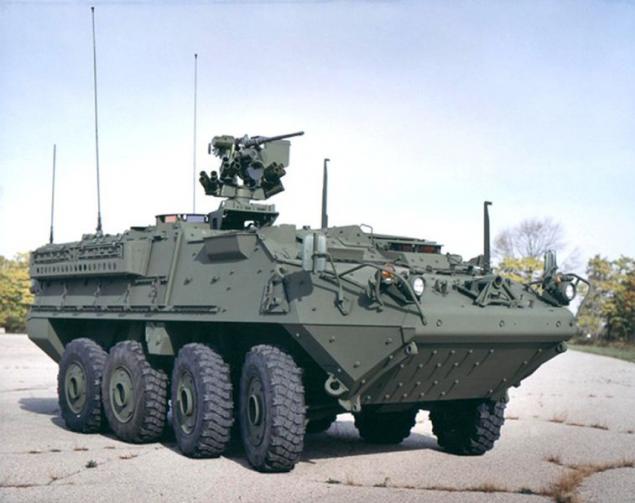
3. MCV-80 (UK)
"Warrior" (English. Warrior - a warrior), also known under the original designation MCV-80 - British modern infantry fighting vehicle. On the inside through notation has an index of British armored FV510. Built in 1977-1983 years the company GKN Sankey commissioned by the British Army FV432 armored personnel carriers to replace the parts in mechanized. Serial production of "Warrior" was conducted for the British Army from 1985 to 1994, only 787 were produced machines of this type, including specialized versions of its database. 254 More machines were later released for Kuwait. "Warrior" was used by British troops in the Gulf War, Afghanistan and Iraq, and as of 2008 still remains the only BMP British Army.
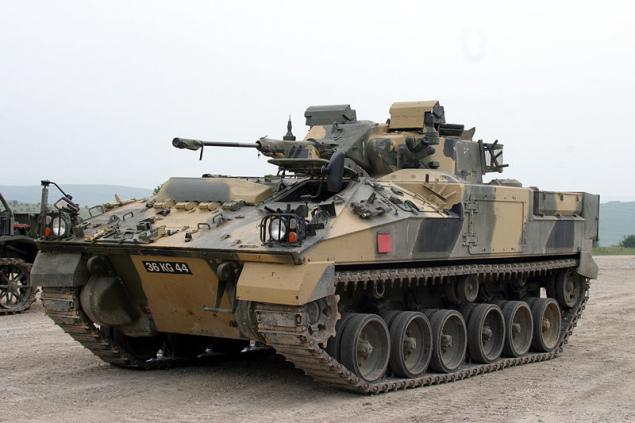
2. "Bradley" (USA)
M2 «Bradley" (eng. M2 Bradley) - US infantry fighting vehicle, named in honor of General Omar Bradley. Established in 1970 under the influence of the Soviet BMP-1 and the German "Marder" as a better alternative to armed and protected armored personnel carrier M113. Currently «Bradley M2A3» is a powerful but outdated machine and has a smaller superiority can be compared with such models as the "Puma», «TH-495" and "BMP-3". The crew consists of three people, can carry up to six soldiers in the troop compartment. On its basis the reconnaissance vehicle M3 «Bradley" is referred to as "the cavalry fighting vehicle" (eng. Cavalry Fighting Vehicle). BMP "Bradley" entered service in 1981, just over 7,000 were produced machines of all versions. It applies the US forces in the Gulf War, Afghanistan and Iraq.
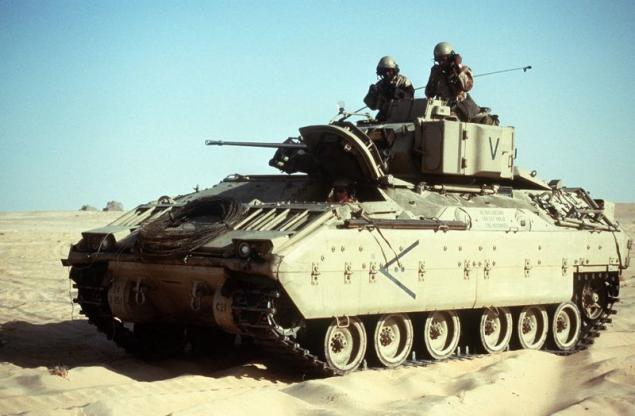
1. M-113 (USA)
Easy universal floating conveyor, created in 1960 for the needs of the US Army, with a crew of two people, the armored aluminum plates, capable of carrying troop compartment of up to 11 people, as well as serve as the basis for dozens of military vehicles for special purposes. The original configuration was armed with 12-millimeter machine gun 7 and is equipped with a gasoline engine. It was subsequently modified three times (respectively, M113A1, A2 and A3). It consists in the armies of several dozen countries around the world, it is produced both in the US and abroad (in Italy, Belgium and other countries).
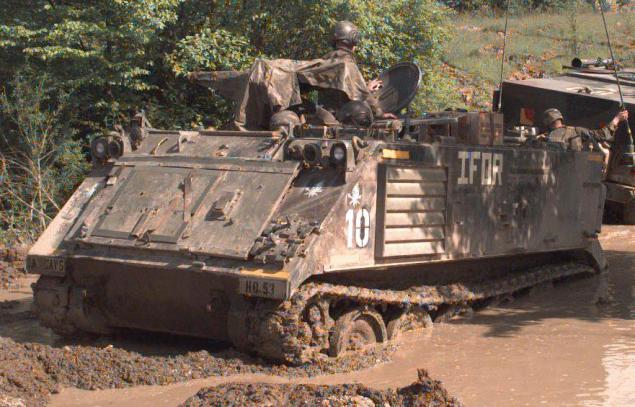
Source:
Military Channel was one rating - the best armored vehicles of the twentieth century. Top of the best armored vehicles left the world more strange impression than tank rating.
The best armored car of all time named the American M113. It's not that the track [next] armored vehicle is bad. Basically the car has left its mark in the history of the world wars. The problem is different: M113 - this is not a machine on which to attack the enemy. Anyway, that is not the enemy, which is able to shoot. On M113 conveniently delivered infantrymen on the battlefield. Then the soldiers dismount and go on the attack, and a machine gunner APCs (for security reasons the machine is left behind) covers them with fire. That is the kind of war it lightly armored cab.
Attack enemy positions can be quite on the other machines: BMP. What is quite amusing: they too are in the ranking. In second place - the American "Bradley" in the sixth - our BMP-1. And here is a list of the machine closes entirely different class of "Humvee" - a military version of the well-known SUV, which we used to call the "Hammer".
And in the rating got wedgies different times and peoples, and other wheeled and tracked vehicles. To complete the picture there is not enough just war chariot of the Roman legionaries and some modern motorcycle.
I want to thank all those who took an active part in the discussion, additions and reading these topics. At the moment - this is the last article on this subject. Soon, maybe I'll come back to this topic, because we have not yet discussed the submarine and istrebitili. But for the moment - is the completion of a series of contributions from the Military Channel! Thank you!
10. "Humvee" (USA)
In 1979, the Pentagon announced a competition to design a light tactical vehicle for the army. Promising development called HMMWV, which stands for High Mobility Multi-Purpose Wheeled Vehicle - «highly mobile multipurpose wheeled vehicle." It is clear that the name of the language can be broken, and not once, so engineers quickly came up with a name easier - «Humvee» («Humvee"). Exactly one year later, in July 1980, the first prototype went on sea trials in the Nevada desert, where are the most secret bases where the US Army and tested the latest military equipment. For example, at the same time there is an SUV "became the wing" fighter F-117A and B-2 bombers, which were created under the "Stealth". The aim of the first stage of testing of all the machines was to select the best specimens, and after twelve months a special technical commission of the US government announced the sentence: contracts for the production of pilot batches of the cars get AM General, General Dynamics and Teledyne. The family of "Humvee" includes fifteen versions with common chassis, engine and transmission - from the staff car to ambulance and mobile rocket launcher. It is important that all this diversity is based on interchangeable and easily mounted modules, of which there are forty-four - the big designer of "Lego" for the military. For example, a two-door truck with the aid of a simple set of tools elementary turns into a mobile command post and vice versa. This is not only practical, but also economically.

9. LVT Mk-4 (US)
Floating car LVT in large numbers were issued during 1942-1944. The name of the family is formed by reducing the English words Landing Vehicle, tracked (amphibious vehicle, tracked). Reservations had only transporters models LVT (A) (2) and later releases machinery LVT (4).
The first of these engine placed in the rear of the housing, and the troop compartment - in the middle. Armor plate thickness of 13 mm at the front and were only on department management.
The machine LVT (4) the engine was moved to the front of the body, and the troop compartment is shifted to the stern. Tailgate was soft, which facilitates loading guns and other bulky items. In the latest series of cars above-water part of which is armored.
All machines have a family welded to the sides of the hull hollow pontoons, which were placed inside the caterpillar bypass. Each pontoon has been divided by partitions into five sections. Therefore, during the formation of the water holes filled only one section and the machine kept buoyant. On the tracks were attached special blades through which the velocity of the water increases. Weapons Mk 4 armored LVT (4) - four gun caliber 7, 62 mm.
8. M-3 (US)
On the basis of BMP created reconnaissance vehicle M3 (scheduled to deliver 3,300 units), which looks no different from M2 "Bradley" and has similar characteristics. However, it changed the layout of the troop compartment, there are no loopholes, increased ammunition weapons, including rockets «Toy» (ten pieces). BRM is equipped with two radios, radar reconnaissance of ground moving target AN / PRS-15, as well as radiation and chemical reconnaissance.

7. «Bren Carrier» (United Kingdom)
"Universal Carrier" (eng. Universal Carrier - «universal transporter"), commonly known as "Bren Carrier" (eng. Bren Carrier - «carrier" Bren ") - British lightweight multipurpose armored personnel carrier of the 1930s and during World War II . Built by Vickers-Armstrong in the years 1934-1936 and was intended to be the carrier of various weapons, especially guns, one of which gave the car its widespread name. Serial production of Universal Carrier lasted from 1936 to 1945, in addition to the UK, they were produced in Canada under the designation T16. In all there were about 90 000 armored vehicles of this type, making it one of the most popular models in the history of armored vehicles. Universal Carrier armored personnel carrier was the main British and Commonwealth during World War II and was used in a variety of roles - infantry armored personnel carrier, the carrier arms, Ammunition Carrier, towing artillery, reconnaissance and other cars. A significant number of machines was also in the war supplied European allies Britain, especially the Soviet Union. After the war, Universal Carrier remained in service with the UK until the 1950s and was used in the Korean War, and also comes in a number of other countries, some of which he was removed from service only in the 1960s.

6. BMP-1 (USSR)
BMP-1 (Infantry Fighting Machines-1) - the first Soviet armored combat tracked vehicle designed for the transportation of personnel to the cutting edge, increasing its mobility, armed and security of the battlefield and joint action with the tanks in battle. Fighting vehicle taken by the Soviet Army in 1966. Serially produced from 1966 to 1979. The armament of the BMP-1 includes 73-mm smoothbore gun 2A28 Grom, coaxial machine gun 7, 62-mm PKT and anti-tank guided missile system 9M14M "Baby", also has a built-in anti-missile system 9K32 "Strela-2».
Protection of the combat vehicle is a case of rolled welded armored sheets. At the top of the front part of a large integrated hatch closing flip-ribbed aluminum alloy armor plates. Tower conical shape. To protect against penetrating radiation a nuclear explosion knocked used anti-radiation.

5. Sd.Kfz. 251 (Germany)
SdKfz 251, Sonderkraftfahrzeug 251 - German half-track armored personnel carrier medium of the Second World War. Created in 1938 on the basis of artillery tractor Sd Kfz 11 and produced commercially from June 1939 to March 1945. During the Second World War, SdKfz 251, along with a light SdKfz 250 armored personnel carrier was the main German and served as the basis for a whole family of cars for different purposes. According to the number of issued copies to World War II armored personnel carriers, he was second only to the American M3. During the Second World SdKfz 251 was delivered in small quantities allies Germany and after the war he modernized version was made in Czechoslovakia before the 80s.

4. "Stryker" (USA)
"Stryker» (Stryker) - a family of wheeled armored vehicles designed and manufactured by the American company "General Dynamics Land Systems» (General Dynamics Land Systems).
It is in service with the US Armed Forces.
Named in honor of two American soldiers was posthumously awarded the Medal of Honor: Stuart S. Stryker, who died in the Second World War, and Robert F. Stryker, who died in the Vietnam War.
Machinery "Stryker" intended to equip the mechanized brigades "Stryker", created in the early 2000s, according to the concept of fighting brigade groups and intended for use in low-intensity conflicts. These teams are intermediate between "heavy" mechanized brigades, armed with tanks M1 «Abrams» and BMP M2 «Bradley" and light infantry brigade.

3. MCV-80 (UK)
"Warrior" (English. Warrior - a warrior), also known under the original designation MCV-80 - British modern infantry fighting vehicle. On the inside through notation has an index of British armored FV510. Built in 1977-1983 years the company GKN Sankey commissioned by the British Army FV432 armored personnel carriers to replace the parts in mechanized. Serial production of "Warrior" was conducted for the British Army from 1985 to 1994, only 787 were produced machines of this type, including specialized versions of its database. 254 More machines were later released for Kuwait. "Warrior" was used by British troops in the Gulf War, Afghanistan and Iraq, and as of 2008 still remains the only BMP British Army.

2. "Bradley" (USA)
M2 «Bradley" (eng. M2 Bradley) - US infantry fighting vehicle, named in honor of General Omar Bradley. Established in 1970 under the influence of the Soviet BMP-1 and the German "Marder" as a better alternative to armed and protected armored personnel carrier M113. Currently «Bradley M2A3» is a powerful but outdated machine and has a smaller superiority can be compared with such models as the "Puma», «TH-495" and "BMP-3". The crew consists of three people, can carry up to six soldiers in the troop compartment. On its basis the reconnaissance vehicle M3 «Bradley" is referred to as "the cavalry fighting vehicle" (eng. Cavalry Fighting Vehicle). BMP "Bradley" entered service in 1981, just over 7,000 were produced machines of all versions. It applies the US forces in the Gulf War, Afghanistan and Iraq.

1. M-113 (USA)
Easy universal floating conveyor, created in 1960 for the needs of the US Army, with a crew of two people, the armored aluminum plates, capable of carrying troop compartment of up to 11 people, as well as serve as the basis for dozens of military vehicles for special purposes. The original configuration was armed with 12-millimeter machine gun 7 and is equipped with a gasoline engine. It was subsequently modified three times (respectively, M113A1, A2 and A3). It consists in the armies of several dozen countries around the world, it is produced both in the US and abroad (in Italy, Belgium and other countries).

Source:

